Jasmine Cottage (Singletons, Hill Cottage, The Nook, Stroud Cottage)
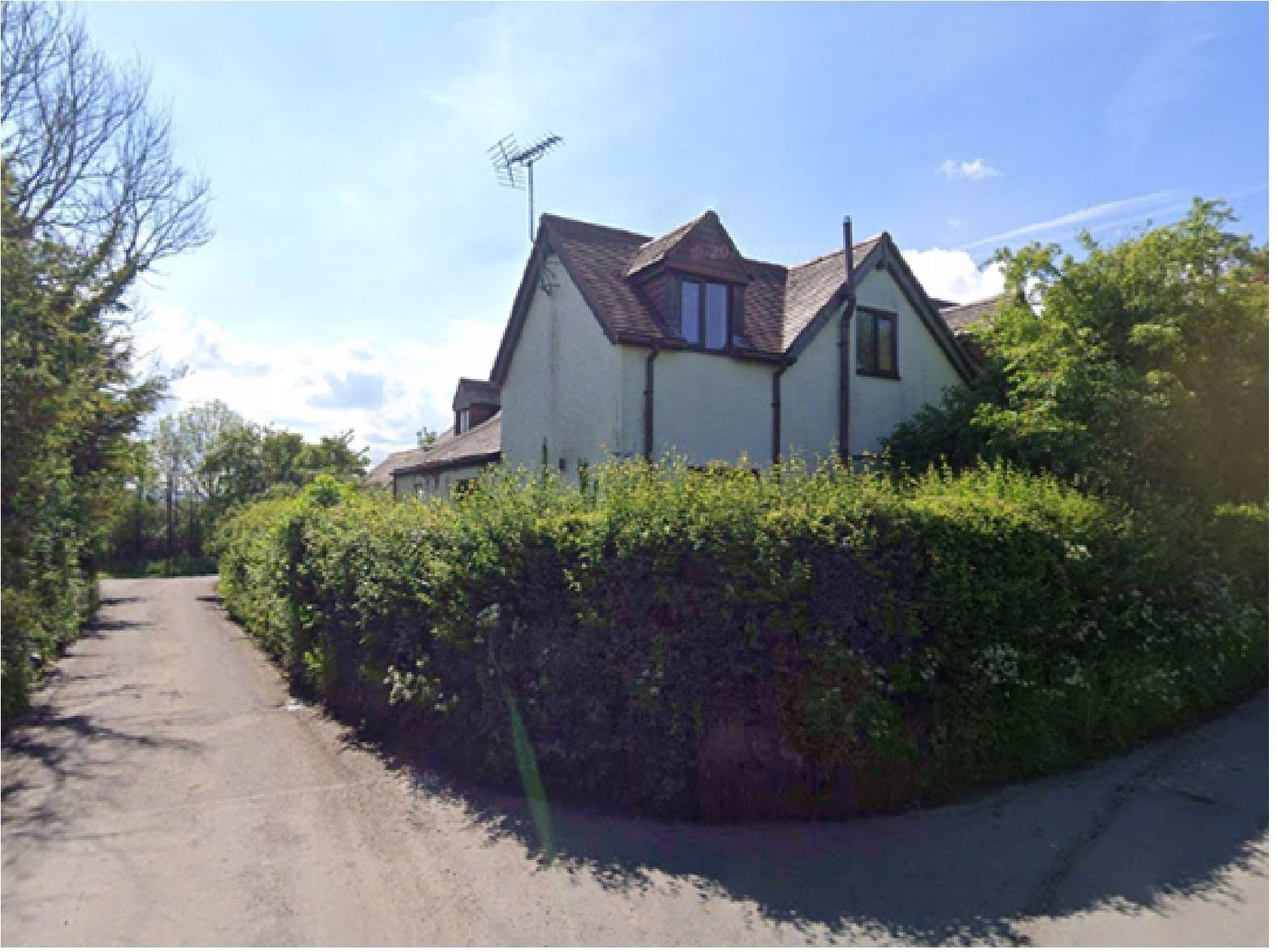
The earliest reference identified in respect of this plot of land dates from 16 July 1709 when Robert Marston, of Norton, sold it to John Bridges, of Rendcomb, near Stroud, for £14 1s 6d. At this time it was described as being “all that little enclosed pasture ground called Singletons, lying at or near Singletons Gate, in Norton aforesaid, containing, by estimate, half an acre or thereabouts, be the same more or less, now in the possession of the said Robert Marston”. There was no cottage on the site at this time.
Little can be found about Robert Marston, who was selling the site, with any degree of certainty, however, a Robert Marston, gentleman, was buried at St Mary’s, Norton, on 17 October 1708 and maybe it was his death that resulted in the sale of the land. This Robert has a memorial that is now set into the outside of the chancel wall of the church that tells us a little more about him; “Here lyeth ye body of Robert Marston of ye Pish Gen who departed ye life ye 15th of Oct 1708 aged 77 years. The Queens Lieutenant whilst on earth, did her just rights maintain, but now he hopes with Christ, in heaven to reign”. Robert and his wife Hester had a son Robert who may have been the person actually selling the site and he died in 1729.
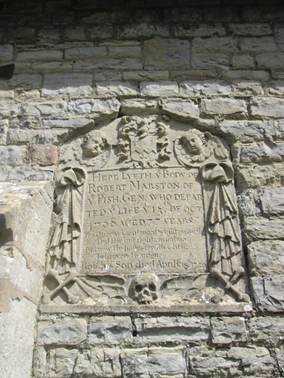
In January 1709, John, son of John and Anne Bridges, was baptised at Rendcomb, and the parents would likely have been the purchasers of this site. Descended from a line of lords, ladies and knights of the realm, the Bridges were a prominent family in the county with an interesting ancestry. Father John and his parents have memorials set in the floor of Tewkesbury Abbey, along with one of John’s brothers, Giles.
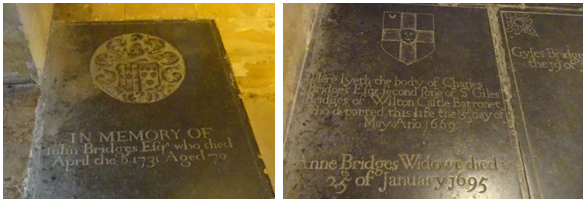
The John jnr, born in 1709, married Ann Burrows at Widford, Oxon, in 1738. John and Ann had two children at Withington, the first born being another son John, before coming to Norton where they had two further children in 1743 and 1746. John, a yeoman of Norton, died and was buried at St Mary’s in 1748. There are a number of Bridges appearing in Norton parish registers for baptism, marriage and burial through the 1740s but nothing later than 1749.
The next reference to the site at Norton dates from 29 January 1771 when it was being sold by a John Bridges to William Crook, husbandman of Norton, for £27. The Indenture of sale provides the link to the earlier John Bridges by describing the seller as “John Bridges of Sudeley, in Winchcomb, husbandman (eldest son of and heir at law of John Bridges, late of Norton … deceased, who was the eldest son and heir of John Bridges, heretofore of Marsden in the parish of Rendcomb)”.
Unfortunately, I have not been able to identify William Crook’s baptism or therefore his parents. Later events suggest William was born in the late 1720s which would make William Crook and Elizabeth (nee Welch) of Norton likely parents. William Crook Snr had nine identified children but has no identified son William, named after himself, which was unusual at this time, and adds to this possibility. William’s parents were buried at St Mary’s, Norton, where they have the following memorial; “Mary, widow of William Crook, and late wife of William Crook, of this parish, daughter of Richard and Elizabeth Welch, who died 26 Oct. 1767, aged 61. William Crook, abovenamed, died 30 Oct. 1742, aged 42, buried with several of his children”.
William Crook Jnr’s first marriage appears to have been with Iddy Welsh on 18 June 1744 at St Mary de Crypt, Gloucester. His wife’s name is recorded differently across records but would appear to have been Edith with her surname perhaps suggesting a family connection to William’s mother. William and Edith had several children at Norton; Mary in 1745, Thomas in 1749, and Hannah in 1753.
William Crook was at Norton when the following was recorded on 11th November 1755; “… on which day appeared personally Hannah Crook of the parish of Norton … spinster … being in her minority to wit of the age of eighteen years … is therefore incapable to act for herself. Wherefore she prayed that William Crook of the said parish of Norton, yeoman, might be assigned guardian to her during her minority…”. The document goes on to confirm that “William Crook of Norton in the County of Gloucestershire, yeoman, and Thomas Leech of the City of Gloucester, innholder, are held and firmly bound unto James Lord Bishop of the Diocese of Gloucester in the sum of five hundred pounds … they shall faithfully manage and dispose for the best benefit and advantage the goods rights and credits which belong to the said minor during her minority”. If William was the son of William Crook and Elizabeth nee Welch as suggested he would have been Hannah’s elder brother. Confusingly, Hannah had married John Marston at Norton on 12 October 1755, just one month previous. It makes sense that her pending marriage might have caused the need for a guardian to oversee her wellbeing but at the time the above document was signed Hannah was already married.
William Crook's first wife Edith died and was buried at Norton in April 1762 leaving widower William free to remarry. Edith was buried at St Mary’s, Norton, where she has the following memorial in the churchyard, possibly with her mother; “Here lieth the body of Elizabeth Weld, who departed this life May ye 1 1748, aged 60 years. Edy, the wife of William Crook, Yeoman, died 30 March, 1762, aged 48”.
William’s second wife, Sarah, had been born at Elmstone Hardwicke in 1721, the daughter of Thomas and Elizabeth Butt. She had married Edmund Merriman at Gloucester in 1740 and had a number of children. An Edmund Merryman died and was buried at The Leigh in February 1763 leaving Sarah a widow and free to remarry William.
William Crook of Norton remarried Sarah Merryman on 1 January 1765 at Elmstone Hardwicke. The couple had married ‘by license’ which fortunately provided additional information. At the time of their marriage William was aged 40 years, a widower and yeoman of Norton and Sarah was a 42 year old widow of Elmstone Hardwicke.
In 1779 William Crook was one of those from Priors Norton who was required to do statute duty by the trustees for repairing and widening the roads from the City of Gloucester towards Cheltenham and Tewkesbury.
In 1783 William Crook was tenant of a property assessed at £3 1s 6d and previously owned by Fitzroy Scudamore. By 1796 William held the same property now owned by the Duke of Norfolk and still assessed the same for land tax.
The Gloucester Journal newspaper of 12 March 1787 advertised a sale that included; “And one piece of arable land, containing about one acre, lying in a field called Church-field, in the parish of Norton aforesaid, in the occupation of Mr William Crook”.
William’s wife Sarah was buried at Norton on 10 November 1801 and on 1 January 1802 William Crook wrote a Will. Amongst the bequests was one to his ‘… grand daughter, Martha Collorick, wife of Thomas Collerick of Norton, butcher … all that new erected messuage or tenement and outbuildings and the garden and orchard to the same adjoining and belonging called Singletons … in the occupation of the said Thomas Collerick’. This is the property that is now known as Jasmine Cottage and suggests that a cottage was first built here in approximately 1800 and was perhaps built by William Crook for the use of Martha upon her marriage. It is believed that at the time he wrote his Will that William Crook was living at what is now Benges Cottage at Priors Norton with John Kirby also in residence.
In June 1800, Thomas Collerick, butcher of Barton Street, Gloucester, had married Martha Kirby of Norton at St Mary’s, Norton, and over the following few years they had several children baptised at Norton. William’s Will also refers to a John Kirby who he describes as his son in law and who was living with William and conducting his business for him at the time. It seems likely that grand daughter Martha would have been the daughter of John Kirby and William’s daughter to make her his granddaughter and John his son in law. The registers of Norton record that Nancy, ‘wife of John Kirby’, was buried here on 21 October 1802 but further checking reveals that John Kirby had in fact married Nancy Merriman at Norton on 24 March 1781 and not a Crook. They married by license which tells us that John was 25 years old and a labourer of Norton whilst Nancy was 30 years old and also of Norton. Born in approximately 1751, Nancy was likely the daughter of William Crook’s second wife Sarah and her first husband Edmund.
William Crook was buried at Norton on 29th February 1804.

At the time the Inclosure Act arrived at Norton in 1806 this property was recorded as Plot No 329, a house, garden and orchard of 2r 18p and was occupied by Thomas Coldrick. [This surname appears in many variations in different documents although Collerick seems to have been the generally accepted version].
On 2 September 1809, a Thomas Collerick, aged 28, was committed to Gloucester prison on suspicion of “having on the 2nd day of September instant, feloniously stole, taken, and carried away from a pasture ground, in the occupation of him the said Richard Hill, situate in the parish of Leigh, one wether sheep, of the value of 20s, the property of him the said Richard Hill”. Later records from the prison state that Thomas was sentenced to death but as his name continues to appear associated with the property at Norton the sentence either wasn’t carried out or this refers to another Thomas Collerick.
In March 1810, Thomas Collerick, butcher of Norton, and wife Martha, borrowed £150 from Jane Collerick, also a butcher, of Barton Street, Gloucester, and used the property at Norton as security for the loan. The indenture records that “part of the same premises were formerly in the occupation of Robert Marston and since of the said William Crook but the whole thereof is now in the possession of Thomas Collerick”.
Later in 1810 the property was leased to Jane Collerick for 5s. Jane Collerick appears to have taken over the ownership and in October 1819 Jane, a widow and still butcher of Barton Street, leased the property for one year to Anthony Wright, a gardener of Norton, for 5s. The indenture for this lease states that “the whole thereof were sometimes since in the possession of Thomas Collerick and Martha his wife, late in the occupation of John Williford, and are now in the possession of Anthony Wright”. Anthony Wright borrowed £125 from Jane Collerick at this time. There is a mention that a Henry Wright had use of the land around this time.
John Williford appears, therefore, to have been tenant here, presumably directly prior to Anthony Wright. This was likely John, born in approximately 1790 at Bredon, who had married Mary, from Slimbridge, and they had several children at Norton in the early nineteenth century. Along with several of his children who married and settled at Norton they appear to have lived ‘at’ or ‘near’ the church at Norton around this time. John died at Gloucester in 1873 but was buried at Norton.
In December 1825, Anthony Wright, then a gardener of Kingsholm, Gloucester, leased the property for one year to Charles Gardner, a gentleman of Kingsholm, for 5s. In December 1823, a Charles Gardner of Kingsholm had married Elizabeth Wright, also of Kingsholm, and possibly a relative of Anthony, at St Mary de Lode, Gloucester. At this time Samuel Golding was recorded as being the tenant. Anthony Wright had married Louisa Cowles at St Nicholas, Gloucester, in 1813 but both died young and have a memorial in the churchyard at Norton; “Sacred to the memory of Anthony Wright yeoman of this parish who departed this life September 16th 1828 aged 37 years. Also of Louisa wife of the above who departed this life July 26th 1823 aged 19(?) years”. Burial records state that Louisa was 40 years old but Anthony doesn’t appear to have been buried here.
There were a few Golding/Gouldings at Norton around this time. Dinah Golding had married Job Gardner in 1824 and they settled and raised a family in Marlpit Lane. In 1830, Elizabeth Golding of Norton married Robert Curtis, also of Norton, and they too settled in the village. In 1810, a Samuel Golding had married Hannah Teale at Tewkesbury and this may be the person who was tenant here. By 1841 Samuel, Hannah and family were living at Elmore.
Jane Collerick, “an old and respected inhabitant of Barton-street, in this city” died in January 1837, aged 94 years. I have not been able to identify her relationship to Thomas Collerick although sister in law seems likely.
We find this property again in 1838 in a ‘terrier and valuation of the messuages, lands, and other hereditaments liable to poor rate in the parish of Norton’. The property is still not named but its owner was then recorded as Charles Gardner and the occupant, Samuel Parker. As he was leasing it at the time, perhaps Charles Gardner took on the property from Anthony Wright after his death. Samuel Parker, a 40 year old agricultural labourer, was still living in this part of the village in 1841, in the household of John and Jane Freeman.
John Freeman was the son of William Freeman and Elizabeth nee Herbert, both from families who were to have an extensive presence in Priors Norton around this time and over the following years. John married Jane Parker, daughter of Samuel, at St Mary’s in 1839, which would explain them living in the same house just 2 years later. I believe they may then have moved and been living at the surviving Benges Cottage.
In December 1848 Charles Gardner sold the property to William Mann and later that same month William Mann wrote a Will appointing Charles Gardner as his executor and bequeathing “… unto my friend Lt Charles Gardner of Kingsholm near the City but in the County of Gloucester … all that my cottage garden and orchard situate also at Norton aforesaid now in the occupation of William Hill which last mentioned hereditaments I recently purchased of him the said Charles Gardner to hold the same cottage, garden and orchard with the appurtenances unto the said Charles Gardner and his heirs in trust to permit and suffer my dear wife to receive and take the rents issues and profits thereof for and during the term of her natural life. And from and immediately after her decease I give and devise the same cottage, garden and orchard unto my son Henry Mann to hold the same to my said son Henry Mann his heirs and assigns forever …”.
William Mann was born in approximately 1790 and married Elizabeth Tombs at Norton in 1820. They likely actually lived in the Wainlode area of the village with William employed as a labourer and they had one son, Henry, in 1824. Although writing his Will in 1848 William Mann died in 1856 as did his executor Charles Gardner. Son Henry married Esther Weston at Standish in 1850 but Henry died in 1859 before William’s widow Elizabeth who died in 1873. The property then passed to Henry’s son, Henry George Mann.
Henry George was born at Norton in 1853, son of George Mann and Esther nee Weston. He married Alice Mary Phipps on 2 February 1880 at Deerhurst and they appear to have had eleven children. After marriage the couple settled at Deerhurst and in 1881 Henry was employed as a brickmaker there. Henry died on 21 March 1929 at Apperley.
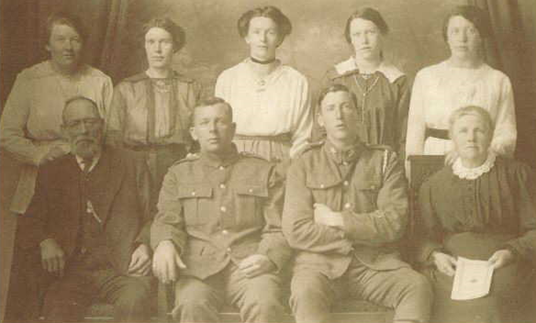
Back row (l to r); Molly, Kate, Mary, Valerie and Gladys
Front row (l to r); Henry George, William, Reginald and Alice Mary
William Hill was tenant when William Mann sold the property in 1848. William was born at Alkerton, Eastington, in 1807, had married Eliza Rodway of Slimbridge in 1829 at Stonehouse and they had previously been living at Cam Lane, Stonehouse. In 1851 the family were recorded in Marlpit Lane, Norton, with William employed as an agricultural labourer. They had seven children and judging by their places of birth must have arrived in Norton between 1847 and 1849. They appear to have still been at Norton in 1854 when son George married their neighbour Saran Ann Goodwin at St Mary’s. By 1861, however, the family had returned to live at West End, Eastington, where William was employed as a teasel dealer. They lived here till their deaths, Eliza in 1873 and William in 1886.
In June 1875 Henry George Mann, then a brickmaker of Tewkesbury, borrowed £50 from William Palmer, a grocer of Gloucester, using the property at Norton as security. Without this loan being repaid, in March 1876 he borrowed a further £20.
In January 1878 an indenture between Henry George Mann, brickmaker of Apperley, William Palmer, grocer of Gloucester, and Alfred John Morton Ball, gentleman of Stroud, records the sale of the property from Henry Mann to Alfred Ball for £150. It was recorded in the indenture that the occupants of the property had been Williford, Goulding, William Hill as tenant of Charles Gardner, and was at that time John Hayward as tenant of Henry Mann. There may have been some dispute about the exact property as Esther Mann, widow of Henry Mann, who was living at 3 Suffolk Street, Gloucester, swore a statement. She stated that she remembered William and Elizabeth Mann, her husband’s parents, who had died in 1856 and 1873 respectively and had both been buried at Norton. As Esther Weston, she had married Henry Mann at Standish in 1850 and, whilst a sawyer living at Norton, Henry had died 1859, also being buried at Norton. Henry George was her second son, being born at Gloucester in 1853. She confirmed the description of the property and its location as mapped on a rough plan.
Alfred John Morton Ball was born in 1845 at Minchinhampton, one of possibly ten children of John Garlick Ball and Mary nee Thomas. Father John Ball had owned a number of cottages at Priors Norton from prior to 1838 and from the 1850s was the owner of World’s End Farm, likely Benges Farm, whilst living at Badbrook, Stroud, employed as a coroner and solicitor. He kept this ownership until his death in 1878 when son Alfred took on the ownership. Alfred grew up with his parents at Paisnwick and Stroud, following his father into the legal profession and marrying Jeanette Cox at Ross, Hereford, in 1881. It is not known when/if Alfred sold the cottage but he died at Stroud in 1921 whilst being the coroner for the Stroud district and Registrar for the Stroud County Court.
This property was known as Stroud Cottage for a number of years and although it is not known when this name was introduced it’s possible that the Ball family named it after their ties to this town.
In 1907 John James Trunkfield and family were living at Stroud Cottage although its likely he wasn’t the owner. Born in 1878 at Tredworth, Gloucester, the son of John, a corn porter, and Eliza, by 1900 John had joined the Gloucestershire Regiment. John married Ellen Louisa White in 1907 and they came to live at Stroud Cottage, with John employed as a general labourer at Gloucester Wagon Works. They remained at Norton until 1912/13 when they returned to Gloucester. During their time at Stroud Cottage they had three children; May Gertrude, Beatrice Louise and John James jnr.
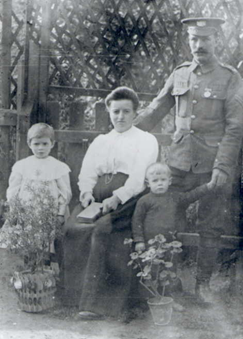
After the First World War the cottage was occupied by Caleb Hopkins, wife Bertha and their children. In the 1990s I was told by Catherine Riddick (nee Groves) who had been at Ivy House Farm between 1916-1924; "Water was brought by float from a house at the end of the lane owned by someone called Hopkins. We had no running water at our farm, course in those days you didn’t, we had a pump but there was nothing forthcoming so we used to buy our water from them".
Caleb was born at Chosen Hill in 1862, son of William Hopkins and Rachel nee Davis and grew up with his parents at Churchdown. Father William was employed as a railway labourer having previously been an agricultural labourer. His father’s work might have influenced Caleb although he had died by the time Caleb was 10. By the time he was 20, Caleb was also employed on the railway as a locomotive cleaner for the Midland Railway. The 1880s were to see a big life change for Caleb, however, as he left these shores and ended up in Mexico. The Gloucester Citizen newspaper of 29 April 1890; “Narrow escape of a Gloucester an in Mexico. Mr Caleb Hopkins, late of Gloucester, but now employed as an engine driver on the Vera Cruz Railway at Mexico, sends particulars in a letter to his mother of a narrow escape which he had on Friday, April 4th. The train which he had in charge was running about eight miles an hour, and had just emerged from the Santiago custom-house yards in the northern suburbs of the city, when, owing to the signalman at the points having turned them wrong, the train ran into a misplaced switch. The engine at once left the rails, only two cars remaining on the line. Several persons received bruises, one passenger, who jumped from the train, having both his legs broken. Hopkins stuck to his engine, and came out of the wreck without a bruise. His fireman jumped from the engine, but also came out unscathed. The signalman who had charge of the switch ‘skipped’ as soon as he saw what had occurred, but he is considered responsible for the wreck. A number of the passengers congratulated Engineer Hopkins on his narrow escape”. Perhaps the accident changed his outlook on life as by 1893 he was back in Gloucester and on 21 June he married Bertha Wardle at Christchurch, Gloucester. The couple were to have two children; William Caleb and Gilbert Wardle. In 1901 and 1911 the family were living in Ryecroft Street, Gloucester, with Caleb once again a railway locomotive engineman. In 1911, both sons, aged 15 and 14 were employed in an engineering works. It is not known when the family first came to Norton but they were at Hill Cottage, along the lane from the church at Priors Norton, by 1920 and likely earlier. Caleb was elected vice-chairman at the inaugural meeting of the Norton Parochial Church Council held at the school on 14 April 1920 also suggesting they had probably been here for a few years before that. In 1921 only Caleb and Bertha were in residence, in a five room property that was still named Stroud Cottage. Caleb was described as an out of work railway engine driver formerly at a filling station at Quedgeley. The family were still at Norton in 1923 but appear to have left that year, moving to Linden Road, Tuffley, where Caleb died in February 1926. His funeral was reported in The Citizen newspaper of 26 February and the report included; “…after serving on the old Midland Railway, worked as a driver on the Mexican Railways, and later became one of the pioneers on the Northern Railway of Costa Rica. He was concerned in the founding of a Lodge in Freemasonry in Mexico, and retained his interest in this until his death, although not actively connected with any local Lodge”.
I have been told that after the Hopkins the ‘Misses Clissold’, three unmarried sisters, came to live here. In 1924 we find Florence Annie and Vera Emily Clissold living at Stroud Cottage, Norton, but this is the only reference I can find for them at Norton. They were born at Hill Farm, Whiteshill, Stroud, of Pelling and Annie Clissold. There was a third daughter, Maud, but I can’t find her at Norton.
In 1924, William Hooper also appears at Stroud Cottage. William Edward George was born at Park Street, Gloucester, in 1898, son of John, a general labourer, and Prudence Hooper, and married Gertrude Frances Stiff in 1915 at St Catherine's, Gloucester. Gertude Frances was born at Sandhurst in 1897, daughter of Thomas, captain of a long boat carrying for a chemical works, and Emily Stiff. They had two children. At the Gloucester City Petty Sessions of December 1927 William was living at Church Lane, Norton, when he was fined £5 and had his license suspended for 12 months for being drunk in charge of a motor car, on Christmas Eve, in Eastgate Street, Gloucester. William had worked for Messrs Fielding & Platt since 1911, had served nearly five years as a driver in the transport section of the army during the First World War, and up to the time of his conviction he had been employed as chauffeur to Mr John Fielding. He was held in high regard by his employer who thought him most reliable. At the Gloucester City Petty Sessions of April 1928, as a result of the support of his employer, the suspension of his driving license was removed. They were still here in 1930.
In 1933 Maud Clarissa Smith was here.
In 1934 William Hewins Tredwell and his widowed mother Georgina were living at Stroud Cottage. William was born in 1885 at Weston Sub Edge, son of Frederick, a farmer and tax collector, and Georgina Tredwell. Georgina died in 1944 and William in 1957, possibly back at Weston Sub Edge.
In 1936 and 1937, Henry Edward and Freda Riley were living here and the cottage was known briefly as The Nook.
I have been told, by several people, that Frank and Molly Bridge were the next occupants but were only here briefly.
Frank was baptised in July 1896 at Coleford, Forest of Dean, son of George William Bridge and Lucy nee Harris who were the innkeepers at The Plough Inn, Coalway, at the time. Frank was still living with his parents and siblings at Gorsty Knoll, Coleford, in 1901, and at Ellwood Lodge, Coleford, in 1911, with his father then employed as a stone quarry foreman. By1921 they were living at The Crews, Upton Bishop, where father George was farming and Frank was assisting. The family came to Norton later that year and they lived briefly at Yew Tree Farm. A notice placed in The Citizen newspaper of 6 October 1921 may actually record their moving to Norton; “Lost, between Upton Bishop and Newent, a part of an iron bedstead. – All expenses paid on information to G Bridge, Norton, near Gloucester”. The family appear to have left Norton just a few years later and Frank married Mary Elvira Theyer ‘Molly’ Neems, of the Vicarage, Treddington, in 1930 at Treddington. Mary Elvira Theyer Neems was born in 1892, daughter of John Neems and Elvira Theyer. In 1936 Frank and Molly were briefly living at 'The Hut', Norton [this property has not been positively identified but may have been located at what is now Jasmine Cottage, Priors Norton]. By 1938 Frank and Molly had settled at Dunsworth Villa from where Frank worked as the village milkman until his death in 1968. Molly died in 1977.

By 1939 James (Jim) Boodle and family were living here. Jim was employed as a dental mechanic in the family business and had married Olive Mary Savage at St Mary de Lode, Gloucester, in 1938. They were both ARP wardens during the Second World War. It is remembered by family that the cottage may have been known as The Nook at this time, although it was still named Stroud Cottage in the deeds, and they named it Hill Cottage on moving here. The cottage water supply came from a hand pump in the garden, there was an EC in a small shed, and pear trees in the orchard from which Jim made his own perry in a shed that was once pigstyes. A death in the Clissold family at Stroud gave them the opportunity to purchase the cottage in August 1961. Olive died here in 1981 and the cottage was sold in June 1990 with Jim going to live with his daughters where he died later that year.

The cottage has been much changed since the above photo was taken.
From at least 2002 the property has been known as Jasmine Cottage but I don’t know when this name was adopted.
In 2002 the occupants were Ian Stewart and Jean Elizabeth Jacqueline West who were still resident in 2024.
